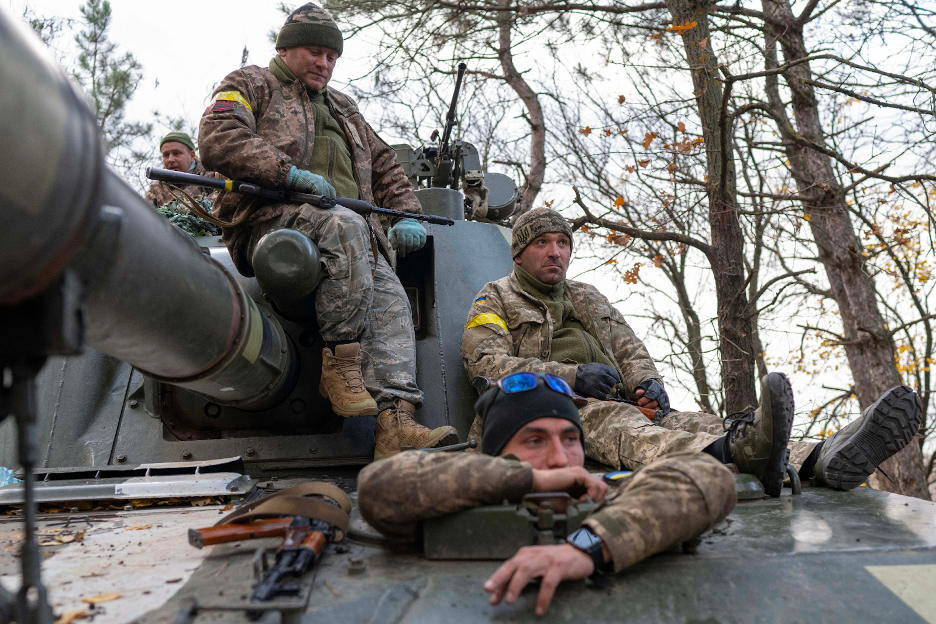Ukraine-Russia War At A Standstill

Image courtesy of NBC News
By Patrick D. Lewis
On February 24, 2022, Russia launched the largest military invasion on the European continent since World War II when it sent over 150,000 men across its western border into Ukraine in what many experts believed would be a quick victory for the forces of Russian President Vladimir Putin and a tragic end to an independent Ukraine. It has been 20 months, nearly 500,000 casualties, and tens of billions of dollars in international aid to Ukraine; the fighting continues.
Ukraine, under the leadership of President Volodymyr Zelenskyy, commenced a much-teased counteroffensive against the Russian invaders in June of this year after defeating the initial Russian drives at the capital city, Kyiv, and other important urban centers and then stabilizing a front that spanned much of eastern Ukraine.
Ukraine’s counteroffensive, though, failed to achieve serious geographic and strategic results. However, it did produce the Wagner Group rebellion against the Russian military and has cost Russia tens of thousands of dead and many more wounded soldiers.
An analysis from a DC-based think tank, The Institute for the Study of War, found that the front line in eastern Ukraine moved less in August of this year than in any month prior and that Ukraine has reclaimed less than 500 square miles of territory in 2023 so far. For comparison, the City of Los Angeles is 502 square miles.
The hostilities in Ukraine have settled into a pattern that many historians can not help but compare to the infamous trench warfare of the First World War due to the months-long, round-the-clock firefights between forces, the entrenched combatants mere meters from each other, and the tens of thousands of lives lost having no real effect on the movement of the front lines.
News cycles, political campaigns, and the polarized American public have stopped closely watching the war in Europe. However, the United States government continues to send billions of dollars of taxpayer-funded weaponry in aid to Ukraine, something that occasionally produces partisan flare-ups in Congress that tend to attract more attention than the invasion itself.
A recent Reuters poll indicated that just 41% of Americans believe the U.S. should continue to provide weapons to Ukraine; 35% of respondents were against continuing the aid packages, and the remaining 24% were unsure.
Despite declining support from the general population, President Biden and his administration have steadfastly supported Ukraine and given every indication that they plan to continue on that path. Other NATO member states, like the United Kingdom and Germany, continue sending tanks, ammunition, and other military supplies to the front lines.
Notably, though, Poland, a NATO state that shares a border with Ukraine and has expressed fear that Putin’s militaristic endeavors may not end with Ukraine, has refused to send jet fighters and other high-value arms to Ukraine in recent months for mainly domestic political reasons.
In the face of a grinding war that is still very real to the civilians on the homefront of Ukraine, many of whom continue to lose loved ones serving in the armed forces and are the unwilling targets of Russian missile attacks, President Zelenskyy and his administration have also remained firm.
Zelenskyy recently traveled to several European nations to speak to their leaders in-person about arms, shipments, and humanitarian aid, and he continues to quickly shut down any talk of peace negotiations with Putin’s Russia.
Various polls over the past couple of months have confirmed that a vast majority of Ukrainian civilians also support continuing the fight until all land occupied by Russia is back in Ukrainian hands.
Zelenskyy and top Ukrainian military commanders continue to express confidence that Russia’s formidable defensive lines, some of the most complicated and extensive seen anywhere in decades, will fail, and Ukraine will retake not only land lost in Putin’s invasion but also the Donbas and Crimea, land that Russia annexed in 2014.
Winter, now firmly settled over Eastern Europe, presents both challenges and opportunities for both sides and, for now at least, Russia and Ukraine appear to be poised to continue the struggle for the foreseeable future. Whether any advances will be made remains to be seen, but, given the past year of war, it isn’t something to count on.







